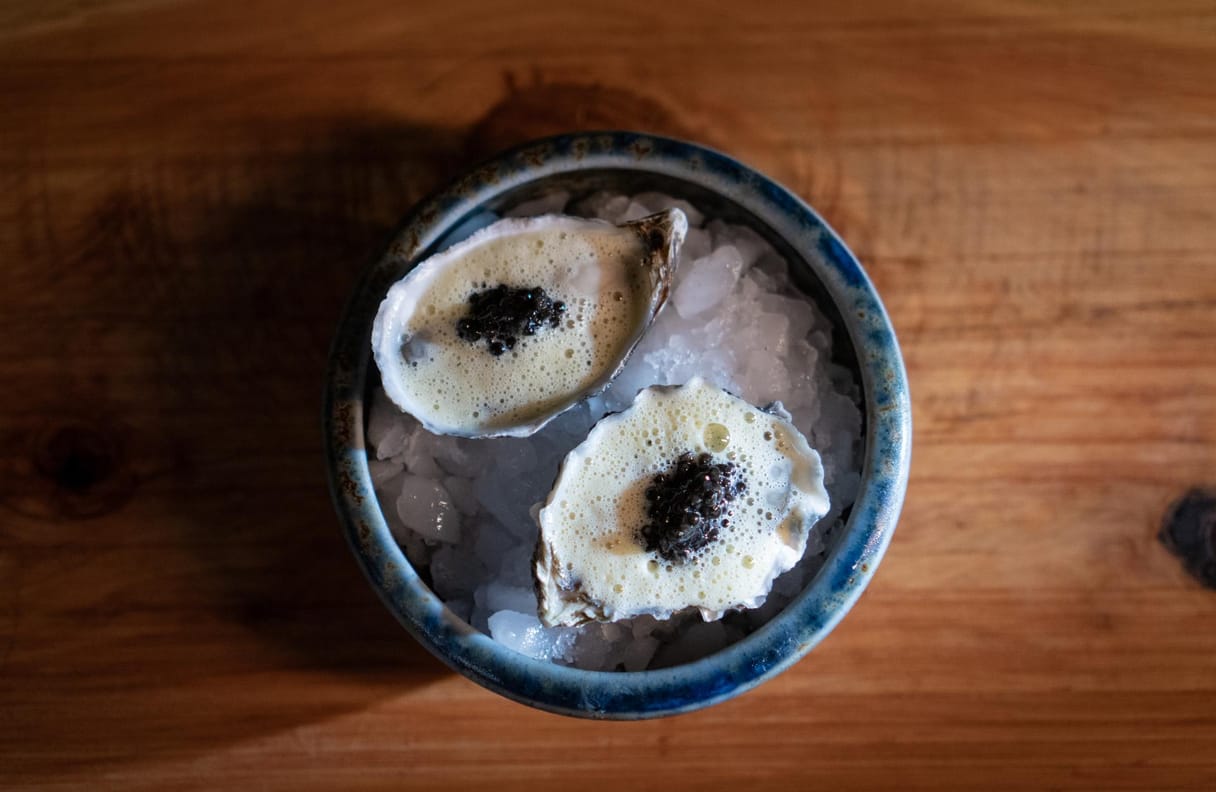'Capturing the blooming moment of each item is our main goal'
Chef Yancy Knapp gives expert insight on small-venue dining
• public
A version of this story first appeared in The Prep newsletter. To get it in your inbox, sign up for free by clicking here.
Perched high above the dramatic cliffs of Big Sur, Treebones Resort offers a rare blend of off-the-grid serenity and elevated eco-luxury. Known for its iconic yurts, ocean-view accommodations, and deep commitment to sustainability, this family-run retreat invites guests to disconnect from daily life and reconnect with nature.
Here, Chef Yancy Knapp, who has helmed the property's Wild Coast Sushi Bar for ten years, opens up about running the highly coveted dining experience, which accommodates only eight people per seating.
What advice would you give other restaurateurs considering a limited-capacity, high-touch service model?
In this specific setting, your interactions with the guest are an important part of the experience. Remember that at the end of the day, the patronage of each guest that you serve is the reason that you are able to do something that you love day in and day out.
What does your ingredient-sourcing process look like, and how can small restaurants build more sustainable, local supply chains?
In this day and age, supporting local fishermen and farmers is not necessarily the easiest route. Sometimes sourcing locally can be more work on your end than going through a larger purveyor, but for me personally the quality and relationships that grow from it make it a no-brainer. We are always supporting local aquaculture as much as possible, so Grassy Bar oysters, and abalone and seaweed from Monterey Bay are always on the menu. We have the benefit of our on-site garden, and we are able to utilize fresh produce as well as preserving and utilizing the flavors of the garden throughout the year.
Your omakase menu offers no substitutions and requires reservations well in advance. How did you develop the confidence to set those boundaries, and what has been the guest response?
Gaining the confidence to switch to a set meal with no substitutions came slowly but surely for me. I would not have been comfortable to offer this meal earlier in my career, but with time comes confidence and I have been working to be the best chef that I can be for the better part of two decades. The guest response seems to grow more positively as we grow in our craft.
With only two dinner seatings per night, every service must run with precision. What systems or rituals do you rely on behind the scenes to maintain consistency and flow?
I have found a lot of comfort and inspiration in tasks that some could easily look at as mundane. We butcher fish, cook rice and prepare everything each day. Capturing the blooming moment of each item is our main goal, so we have built our prep routine around that. I take my sons down to the tide pools in the mornings several days a week to gather seaweed and ocean water, which is incorporated into the meal.
Big Sur is a remote location. How do you navigate staffing, sourcing, and logistics challenges that come with running a fine-dining operation so far from urban centers?
I am lucky to have been working with my fellow chef DJ Underwood for the last nine years. In addition to working with him so consistently, I have had three of my colleagues from San Diego come up and work with me over the years. Navigating the sourcing can be tricky in a remote place but teamwork makes the dreamwork.
Thank you for reading The Prep.
We bring you the latest news, trends, business tips and analysis for aspirational independent restaurants. Have a story idea or a business you think we should spotlight? Contact us. Interested in advertising, contact our advertising department.
If you'd like to read more, check out our Hidden Menu exclusives.
